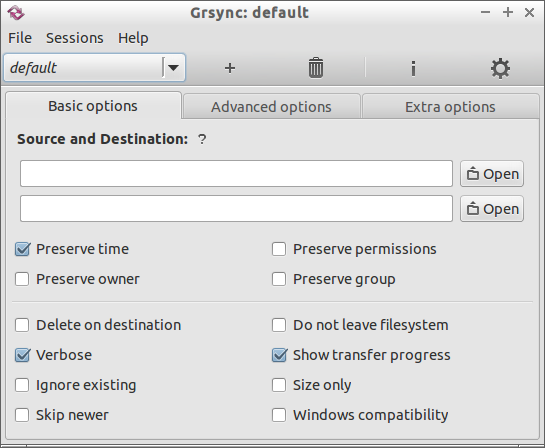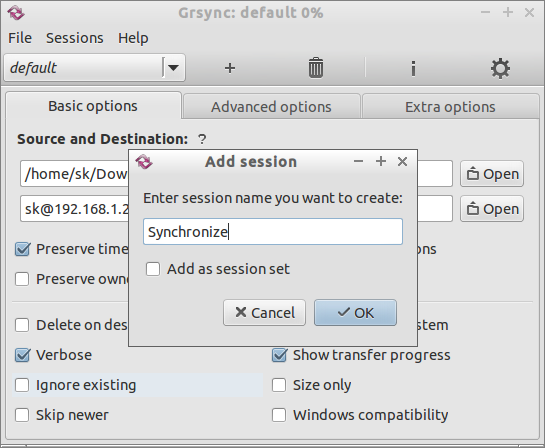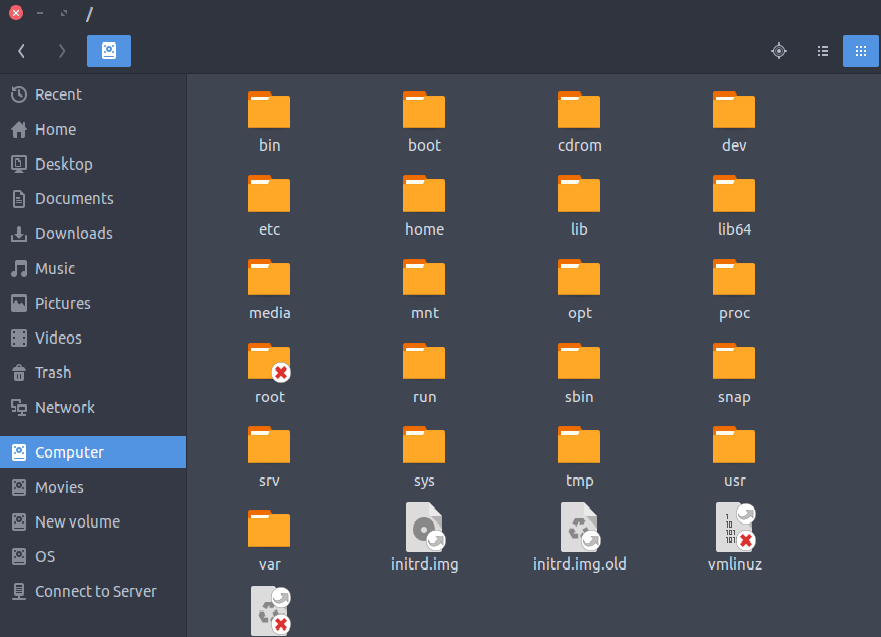

- #Grsync root files how to#
- #Grsync root files install#
- #Grsync root files archive#
- #Grsync root files password#
- #Grsync root files free#
#Grsync root files install#
Ubuntu, Debian: sudo apt install rsync grsync or sudo apt-get install rsync grsync It offers many options that control every aspect of its behavior and permit very flexible specifications of the set of files to be copied.Ĭhances are rsync is already installed on your Linux distro, but here are instructions to install it for your environment anyways:įedora, RedHat, CentOS: sudo dnf install rsync grsync or sudo yum install rsync grsync It can copy files and folders locally and remotely using the remote shell. rsync is a quick and incredibly versatile file copying tool. You can check other features using cp -help.įor more complex operations, you should use rsync. The new_folder folder was empty, and I copied the 1.txt file in it. The simplest format is cp file destination_folder/ It also has a list of arguments for several additional actions. The most straightforward tool for transferring files and folders is cp.

#Grsync root files password#
Transfer Files to and from a Remote Linux Host Using a SSH Password.
#Grsync root files how to#
This guide will explore how to transfer files locally and remotely using cp and rsync commands. There are multiple ways of transferring files on Linux operating systems.
#Grsync root files free#
You may also want to read how to exclude files or directoriesįeel free to leave a comment if you have any questions.The necessity of transferring files has always been of the utmost importance in all IT domains, so making sure the process is secure, easy, and clean is a top priority. We have shown you how to use rsync over SSH to copy and synchronize files and directories. Session or use the -P option which tells rsync to show a progress bar during the transfer and keep the partially transferred files: rsync -a -P /home/linuxize/images/ Conclusion # For example, if SSH is listening on port 3322 you would use: rsync -a -e "ssh -p 3322" /home/linuxize/images/ transferring large amounts of data it is recommended to run the rsync command inside a screen On a port other than the default 22, specify the port using the -e option. When the trailing slash is omitted the source directory will be copied inside the destination directory.įor example to transfer the local /opt/website/images/ directory to the /var/rsync -a -delete /home/linuxize/images/ SSH on the remote host is listening When the source directory has a trailing slash, rsync will copy only the contents of the source directory to the destination directory. It is important to know that rsync gives different treatment to the source directories with a trailing slash /. Transferring directories with rsync over SSH is same as transferring files. If you want to save the file under a different name, specify the new name: rsync -a /opt/file.zip transfer data from a remote to a local machine, use the remote location as the source and the local location as destination: rsync -a /opt/ If the file exists on the remote server it will be overwritten. To the remote machine, you will be prompted to enter the user password. If you haven’t set a passwordless SSH login
#Grsync root files archive#
The newer versions of rsync are configured to use SSH as default remote shell so you can omit the -e ssh option.įor example, to transfer a single file /opt/file.zip from the local system to the /var/you would run: rsync -a /opt/file.zip -a option stands for archive mode which will syncs directories recursively, transfer special and block devices, preserve symbolic links, modification times, group, ownership, and permissions. Where SRC is the source directory, DEST is the destination directory USER is the remote SSH username and HOST is the remote SSH host or IP Address. The general syntax for transferring files with rsync is as follows: With rsync, you can transfer files and directories over SSH from and to remote servers. The user running the rsync command and the remote SSH user must have appropriate permissions to read and write files. Ubuntu and Debian: sudo apt install rsyncĬentOS and Fedora: sudo yum install rsync If it is not installed you can install it using your distribution’s package manager: The rsync utility must be installed on both the destination and the source systems.

In this tutorial, we will explain how to copy files with rsync rsync can be used for mirroring data, incremental backups, copying files between systems and so on. There are specialized tools for file transfer over SSH such as scpīut none of them has all the features that rsync provides. While FTP is very popular, always prefer using SSH as it is the most secure way to transfer your files. The most popular protocols for data transfer are SSH and FTP


 0 kommentar(er)
0 kommentar(er)
